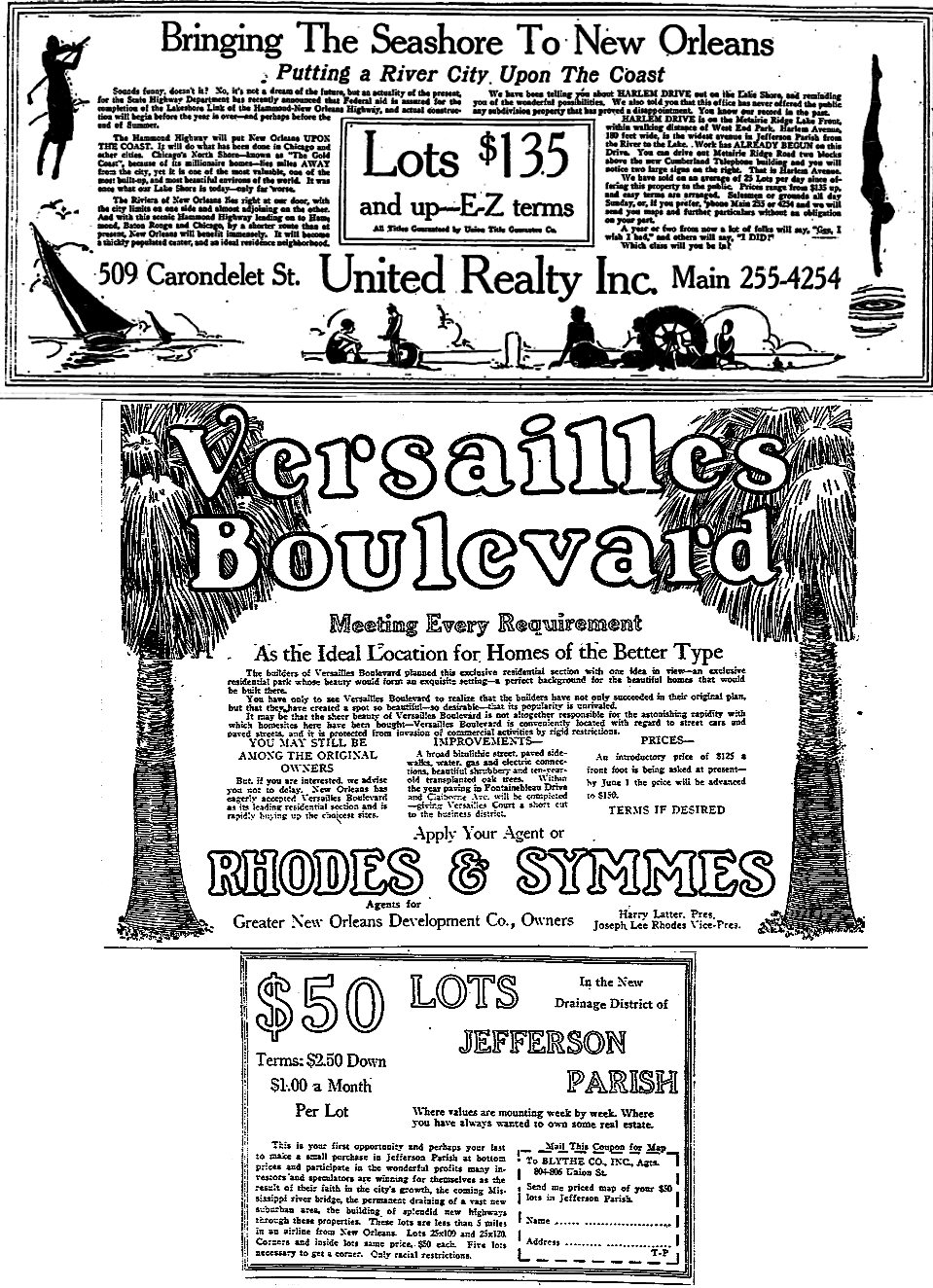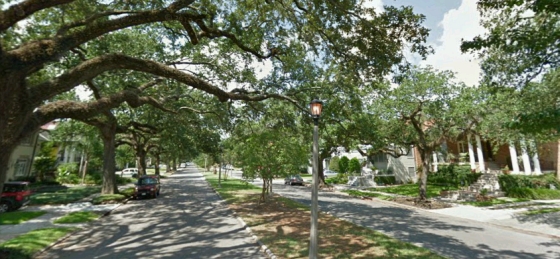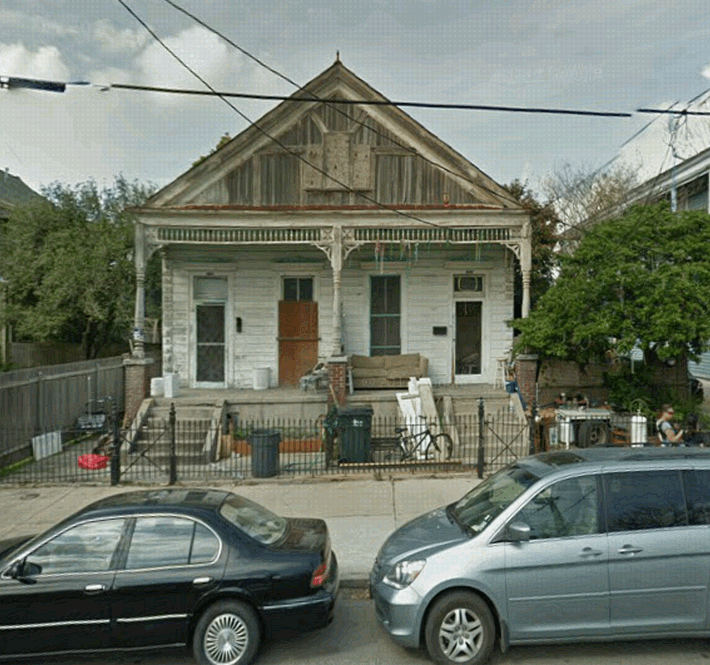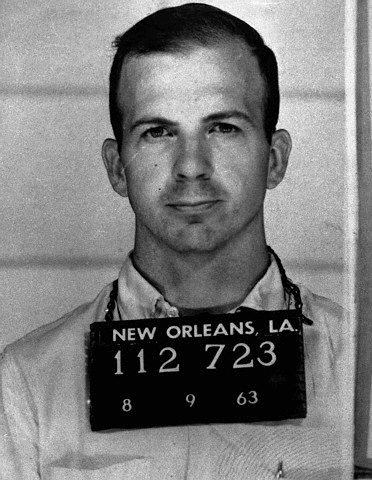|
Today in New Orleans History |
|
|
May 10



 

To receive an update for each day in New Orleans
history, join our facebook page
- Today in New Orleans History
Tweet
Albert Baldwin Wood (December 1, 1879 – May 10, 1956) graduated from Tulane with a Bachelor of Science in Mechanical Engineering
in 1899. He was hired by the Sewerage & Water Board of New Orleans in 1899 to try to improve
the flood-prone city's drainage, Wood invented "flapgates" and other hydraulic devices, most notably efficient
low maintenance high volume pumps, including the Wood Screw Pump (1913) and the Wood Trash Pump
(1915). Wood spearheaded the reclamation from swamp and the efforts to develop much of the land now occupied by the city
of New Orleans. While he spent most of his career in New Orleans, Wood also consulted and designed the drainage, pumping,
and sewage systems for other locations including Chicago, Milwaukee, Baltimore, San Francisco,
as well as projects in Canada, Egypt, China, and India. His work was especially helpful in the Zuiderzee Works, which reclaimed
large areas of land from the Zuider Zee in the Netherlands. Some of Wood's pumps have been
in almost continuous use in New Orleans for over 80 years without need of repairs, and new ones continue to be built from
his designs. When Wood died, he left a bequest to Tulane University on the condition that it preserve and display his sailing
boat, the Nydia, for 99 years. Until 2003, the boat was housed in a specially constructed glass-fronted display area located
between the University Center and Fogelman Arena. It was moved to make room for the renovation
and expansion of the University Center. Because Tulane did not fully adhere to the terms of the will, Wood's heirs have
recovered possession of the boat through legal means. The Nydia is on display at the Biloxi Maritime and Seafood Industry
Museum in Biloxi, MS, not far from where the boat was originally constructed at the Johnson Shipyard. From http://en.wikipedia.org/wiki/A._Baldwin_Wood Jazz trumpeter, bandleader, and occasional singer and flugelhorn player Theodore (Teddy) Riley, born
in New Orleans on May 10, 1924, the son of Amos Riley (c. 1879 - 1925), a New Orleans trumpeter and bandleader.
Known for playing jazz, he also worked and recorded with various Rhythm & Blues bands and artists including Louis Cottrell,
Jr., Fats Domino, Champion Jack Dupree, The Dookie Chase Orchestra, Roy Brown's Band, The Onward Brass Band, The Olympia Brass
Band, The Williams Brass Band, and The Royal Brass Band. In 1971 Riley played on the cornet used by Louis Armstrong
in his youth for the New Orleans ceremonies marking Armstrong's death. He made a guest appearance on Wynton Marsalis' 1989
release "The Majesty of the Blues." He performed both leading his own small band at hotels and clubs as well as
in various brass bands until just weeks before his death on November 14, 1992. On May 10, 1870 at what is now called LaSalle’s Landing in Kenner’s Rivertown,
“Gypsy” Jem Mace, the 165 pound Heavyweight Boxing Champion of England, vied for the first Heavyweight Boxing
Champion of the World title and a $2,500 prize against Tom Allen, the 170 pound American Heavyweight Champion.
The bare-fisted bout lasted ten rounds in 44 minutes. Mace was the victor. Today a life-size bronze scultrure
depicting and memorialising the bout stands in Rivertown. More information.
William Freret (1804 – June 14, 1864) was Mayor of New Orleans from May 10, 1840
to Apr. 4, 1842, and again from Feb. 27, 1843 to May 12, 1844. He was born in New Orleans, and was of mixed
English and French descent: his father was an English merchant who settled in New Orleans and married a Creole woman.
His father built on the boy's natural mechanical talent, sending him to Europe to be educated in engineering and the mechanical
arts. He returned to New Orleans and eventually succeeded to his father's business of compressing cotton for shipment
abroad. Under his direction, the Freret Cotton Press Company became the first large industrial firm in New Orleans,
and propelled him to public visibility and a political career. Despite his Creole mother, he joined the Native American party,
a new political group that sought to limit the influence on public affairs of Creoles and other groups viewed as "foreign";
under its banner he won the 1840 election by 1,051 votes to the 942 of his predecessor Charles Genois. The word “Metairie” first appeared in the Daily Picayune in an advertisement on May
10, 1827 which alerted that a stray mule was found on Mr. Hazeur's property and would be sold by the 4th of July
if not claimed. A June 16, 1883 advertisement offered: FOR SALE – 25 GOOD MILCH [dairy] COWS with young Calves. Apply
to ALFRED BONNABEL, Metairie Ridge, 1 1/2 miles from Halfway House”. Even into the mid 20th century Metairie was largely
rural – 1945 ads offered “four fresh cows with calves and farm equipment – 731 Carrollton St.”, cows
at 201 Zinnia, a bull at 52 Metairie Heights, and a horse at 102 Oaklawn Drive. (llm) Lee Harvey
Oswald Moves to 4907 Magazine St. In 1963 Lee Harvey Oswald, his wife Marina, and their daughter June lived in the rear of the right
half of this double at 4907 Magazine Street, Lee Harvey Oswald was born in the French Hospital at 1821 Orleans Avenue in New Orleans
on October 18, 1939 to Robert Edward Lee Oswald, Sr. and Marguerite Frances Claverie. Robert, Sr. died of a heart attack
two months prior to Lee's birth. Oswald had two older siblings—brother Robert Edward Lee Oswald, Jr. and half-brother
John Edward Pic. In 1944, Oswald's mother moved the family from New Orleans to Dallas. Oswald entered the 1st grade
in 1945 and over the next half-dozen years attended several different schools in the Dallas and Fort Worth areas through
the 6th grade. As a child, Oswald was described by several people who knew him as withdrawn and temperamental. In August 1952,
when Oswald was 12, his mother took him to New York City where they lived for a short time with Oswald's half-brother, John
Pic. Oswald and his mother were later asked to leave after an argument in which Oswald allegedly struck his mother and threatened
Pic's wife with a pocket knife. Oswald attended the 7th grade in the Bronx, New York but was often truant, which led
to a psychiatric assessment at a juvenile reformatory. The reformatory psychiatrist, Dr. Renatus Hartogs, described Oswald
as immersed in a "vivid fantasy life, turning around the topics of omnipotence and power, through which [Oswald] tries
to compensate for his present shortcomings and frustrations." Dr. Hartogs detected a "personality pattern disturbance
with schizoid features and passive-aggressive tendencies" and recommended continued treatment. In
January 1954, Oswald's mother returned to New Orleans, taking Oswald with her. At the time, there was a question pending
before a New York judge as to whether Oswald should be removed from the care of his mother to finish his schooling, although
Oswald's behavior appeared to improve during his last months in New York. In New Orleans, Oswald attended Beauregard
Jurnior High and Warren Easton High -- completing the 8th and 9th grades and entering the 10th grade in 1955 but quit
school after one month. After leaving school, Oswald worked for several months as an office clerk and messenger in New
Orleans. As a teenager, in 1955, Oswald attended Civil Air Patrol meetings in New Orleans. Oswald's fellow cadets recalled
him attending C.A.P. meetings "three or four" times, or "10 or 12 times" over a one- or two-month period
. Though the young Oswald had trouble spelling and writing coherently, he read voraciously. By age 15, he claimed to
be a Marxist, writing in his diary, "I was looking for a key to my environment, and then I discovered socialist literature.
I had to dig for my books in the back dusty shelves of libraries." At 16 he wrote to the Socialist Party of America for
information on their Young People's Socialist League, saying he had been studying socialist principles for "well over
fifteen months.' However, Edward Voebel, "whom the Warren Commission had established was Oswald's closest friend
during his teenage years in New Orleans...said that reports that Oswald was already 'studying Communism' were a 'lot of
baloney.' " Voebel said that "Oswald commonly read 'paperback trash.'" In July 1956,
Oswald's mother moved the family to Fort Worth, Texas and Oswald re-enrolled in the 10th grade for the September session.
A few weeks later in October, Oswald quit school at age 17 to join the Marines he never received a high school diploma.
By the age of 17, he had resided at 22 different locations and attended 12 different schools. Oswald returned to New
Orleans on April 24, 1963. What follows are some of his activities in the city based on W. Tracy Parnell's information: April 25, 1963: He moves in with his
aunt Lillian Murret at 757 French Street in Lakeview. Murret was the sisiter of his mother, Marguerite Oswald. April 26, 1963: He visits the employment office in New Orleans. April 28, 1963:
He makes an effort to contact relatives on his father's side. April 29, 1963: Files an appeal concerning
his unemployment benefits. May 9, 1963: With the help of Myrtle Evans, a long-time friend of his mother,
finds work at the William B. Reily Coffee Company whose owner, William Reily, was a backer of the Crusade to Free Cuba Committee,
an anti-Castro organization. Oswald worked as a machinery greaser for $1.50 per hour. He also finds an apartment. May 10, 1963: Starts work at the William B. Reily Coffee Company and moves into an apartment
which was rented for $65 per month at 4907 Magazine St. (near Upperline) owned by Mrs. J. J. Garner of 4911 Magazine.
"He wouldn't speak to anyone", she said and reported that neighbors told her that he usually stayed home "sitting
on the porch reading all day long". May 11, 1963: Ruth, Marina, and June (his child) arrive
at the apartment. May 26, 1963: Oswald writes to the New York City headquarters of the pro-Castro Fair
Play for Cuba Committee, proposing to rent "...a small office at my own expense for the purpose of forming a FPCC branch
here in New Orleans." May 29, 1963: The FPCC responded to Oswald's letter advising against
opening a New Orleans office "at least not ... at the very beginning." In a follow-up letter, Oswald replied,
"Against your advice, I have decided to take an office from the very beginning." As the sole member of the
New Orleans chapter of the Fair Play for Cuba Committee, Oswald ordered the following items from Jones Printing Company,
422 Girod Street (near the Reily building): 500 application forms, 300 membership cards, and 1,000 leaflets with the heading,
"Hands Off Cuba." According to Lee Oswald's wife Marina, Lee told her to sign the name "A.J. Hidell"
as chapter president on his membership card. June 3, 1963: Rents
a new PO box, using A.J. Hidell as one of the people who will receive mail there. June 8, 1963:
Marina is rejected for treatment at Charity Hospital, which infuriates Oswald. June 16, 1963: Distributes
FPCC literature at the Dumaine Street wharf. June 24, 1963: Applies for a new passport. July 6, 1963: Is invited by his cousin Eugene Murret to speak to a group of students at the Jesuit House
of Studies in Mobile, Alabama, where Eugene is studying to be a priest. July 11, 1963: Ruth invites
Marina to live with her separately from Oswald. July 19, 1963: He is fired from the Reily Coffee
Company "...because his work was not satisfactory and because he spent too much time loitering in Adrian Alba's
garage next door (at 618 Magazine Street), where he read rifle and hunting magazines." . July
22, 1963: He files a claim for unemployment benefits. July 25, 1963: His request for a review of
his undesirable discharge from the military is denied. July 27, 1963: Speaks to the Jesuit group
for 30 minutes on the subject of "Contemporary Russia and the Practice of Communism". August
5 and 6, 1963: According to 29 year-old anti-Castro militant Carlos Bringuier, Oswald visited him at Casa Boca (107 Decatur
Street at Canal St. next to the Cusom House), a store he owned. Bringuier was the New Orleans delegate for the
Student Revolutionary Directorate (DRE), an anti-Castro organization. Bringuier would later tell the Warren Commission
that he believed Oswald's visits were an attempt by Oswald to infiltrate his group. August 6,
1963: Leaves his Marine Corps manual at Bringuier's store. New Orleans Police Department photographic records. August 9, 1963 August
9, 1963: Oswald distrubutes pro-Castro leaflets downtown. Bringuier confronted Oswald, claiming he was tipped
off about Oswald's activity by a friend. A scuffle ensued and Oswald, Bringuier, and two of Bringuier's friends were arrested
in the 700 block of Canal Street for disturbing the peace. He spend the night in jail. August
10, 1963: A friend of the Murrets bails him out late in the afternoon. Before leaving the police station, Oswald asked
to speak with an FBI agent. Agent John Quigley arrived and spent over an hour talking to Oswald. August
12, 1963: Pleads guilty to the charge of disturbing the peace and is fined $10. August 16, 1963: Oswald
passes out Fair Play for Cuba leaflets with two hired helpers in front of the International Trade Mart. The incident was
filmed by WDSU—the local TV station. August 17, 1963: Radio commentator William Stuckey from
radio station WDSU visits him and asks him to appear on the program Latin Listening Post. He arrived at the station at 5:00
PM and taped a 37-minute segment, which was cut to 4 and a half minutes and broadcast at 7:30 that evening. Stuckey also invites
him to take part in a radio debate with Carlos Bringuier and Bringuier's associate Edward Butler, head of the right-wing
Information Council of the Americas (INCA). August 19, 1963: Accepts Stuckey's offer to debate
Bringuier and Butler on live radio. August 21, 1963: Debates Bringuier and Butler, on the
program Conversation Carte Blanche, which runs from 6:05 to 6:30 PM. September 17, 1963: Obtains
a tourist card good for one visit to Mexico City from the Mexican consulate in New Orleans. September
20, 1963: Ruth visits the Oswalds, and it is decided that Marina will return to Irving, Texas with Ruth for the birth
of their second child. September 23, 1963: Ruth and Marina leave for Irving. September
25, 1963: Oswald collects his unemployment check of $33. Later that day he catches a bus bound for Houston. According to his
landlord, Mrs. J. J. Garner, he owed about 15 days rent and according to his landlady "All he left was an empty carton
of beer cans". A 1988 Times-Picayune article looked back at Oswald's time in New Orleans during
the summer of 1963: Kerry and Diane West who then occupied the Magazine Street home the Oswald's had rented were interviewed.
Diane remembered Oswald from her childhood when she lived in the same neighborhood. She described him as a reclusive
figure who wore a old felt hat and a faded trenchcoat who scolded his child in Russian. She remembered that he dug in
neighbors' garbage cans for discarded newspapers and magazines. She said, "He never talked to anyone. He
was sneaky". Another neighbor, Catherine Schmitt said, "Most of the time he walked backwards" and "Spent
most of his time looking at the sky". She said Marina was seldom seen outside. Adrian Alba,
who owned a garage near the Reily building, had somewhat befriended Oswald who spent much time playing hookie from work at
his business. Oswald enjoyed reading Alba's gun and hunting magazines and discussing guns with him. Oswald had even
invited Alba several times to his home to see his "gun collection" but never set a time and date. While working
at Reily, Oswald, like his co-workers, often had lunch at Martin's Restaurant at 701 Tchoupitoulas, which was near the
buisness, but he sat alone in a booth near the back of the restaurant. Marina said that she and Lee
went to the French Quarter but didn't have enough money to eat in any of the restaurants. The Oswalds took their daughter
to Audubon Park and the zoo. |
|
|

To receive an update for each day in New Orleans history,
join our facebook page - Today in New
Orleans History.
Analytics |





